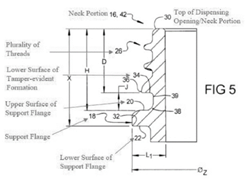The US Court of Appeals for the Eleventh Circuit reversed and remanded a district court’s summary judgment ruling finding no likelihood that consumers might be confused as to any relationship between competitors operating in the same state, in similar trade channels and using a mark having the same primary word component. The Court held that a reasonable factfinder could determine that there was a likelihood of confusion between the parties’ marks as used in commerce. FCOA LLC v. Foremost Title & Escrow Services LLC, Case No. 19-13390 (11th Cir. Jan. 12, 2023) (Branch, Grant, Tjoflat, JJ.)
FCOA is an insurance company that has been selling and marketing insurance policies using FOREMOST marks since 1952. Foremost is a shell company selling title insurance on behalf of a law firm. Both parties operate in Florida. Seven months after Foremost started using its FOREMOST mark, FCOA sent Foremost a cease-and-desist letter. Foremost disputed the trademark infringement allegations and denied having any knowledge of FCOA or FCOA’s FOREMOST marks. The district court denied FCOA’s summary judgment motion and granted Foremost’s cross-motion for summary judgment, holding that FCOA failed to show a likelihood of confusion between the marks. FCOA appealed.
The Eleventh Circuit reviewed the district court decision de novo. Since there was no dispute that FCOA’s marks were valid, the Court focused its trademark infringement analysis on whether Foremost’s FOREMOST mark was likely to cause consumer confusion. It did so by analyzing its eight likelihood of confusion factors:
- Actual confusion is the most important factor in the analysis. The Eleventh Circuit found no evidence that consumers actually confused the parties’ marks in the period between Foremost’s allegedly infringing acts and the lawsuit filing. Therefore, this factor weighed against a likelihood of confusion.
- A mark’s strength/distinctiveness is the second most important factor because it analyzes the scope of the mark’s protection. The Eleventh Circuit found that FCOA’s FOREMOST mark was distinctive because, although the word mark in isolation is descriptive, it achieved secondary meaning through consumer recognition and commercial strength. The Court did not find Foremost’s list of likely inactive businesses using FOREMOST to be compelling rebuttal evidence. Therefore, this factor weighed in favor of a likelihood of confusion.
- Similarity of the marks is relevant because the likelihood of confusion increases as the marks share more overall similarities. The Eleventh Circuit focused on the distinctive parts of the marks, noting that both logos feature FOREMOST prominently in bold, have two lines of text and are similarly centered and stylized. While there are differences in the logo fonts and colors, the Court determined that this factor still weighed in favor of confusion because consumers are unlikely to be discerning about these differences.

- Similarity of the products that the marks represent is relevant in determining whether consumers think the marks originate from a single source. The Eleventh Circuit determined that [...]
Continue Reading
read more

 Subscribe
Subscribe




